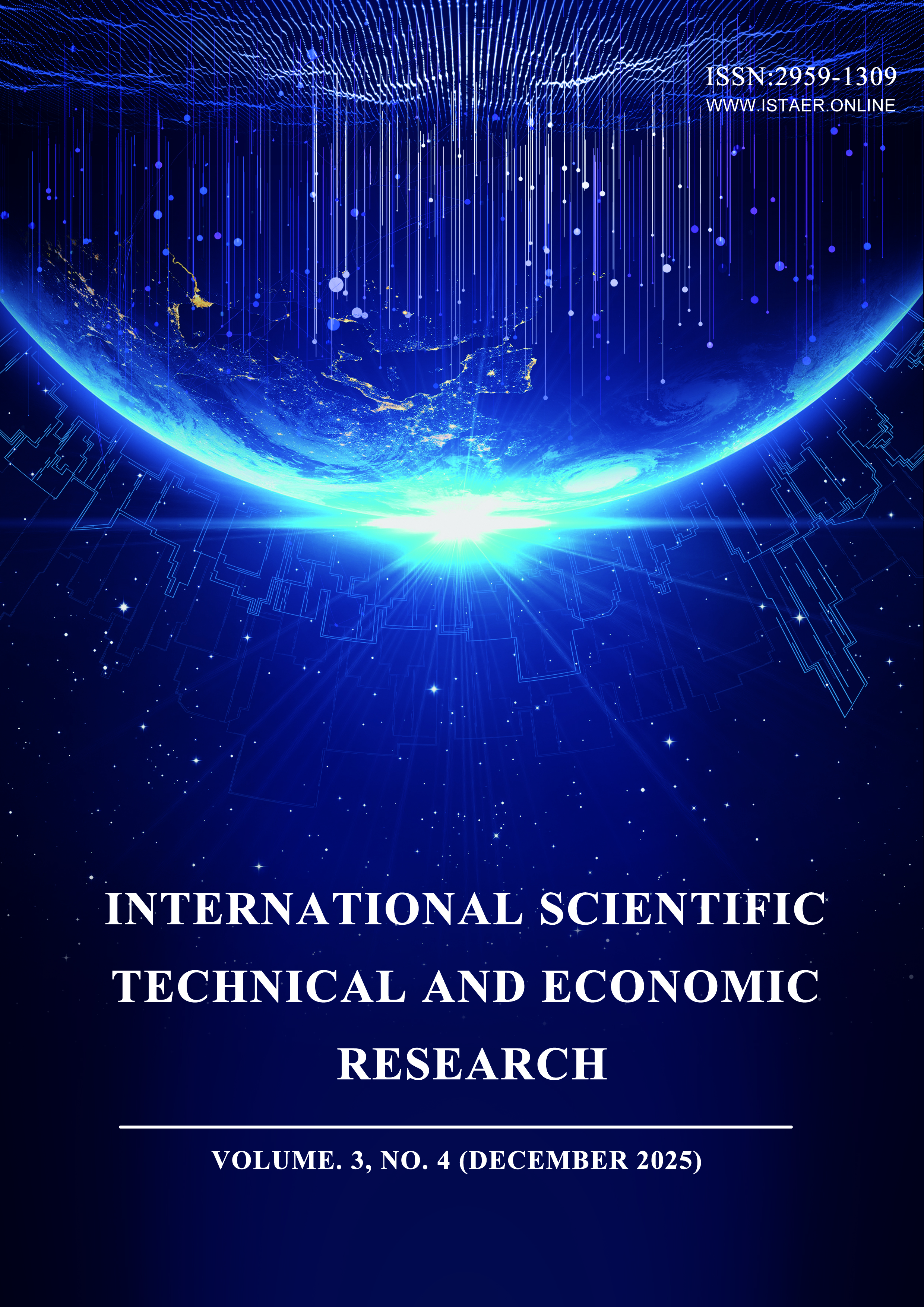Construction of Self-Optimization and Quality Prediction Model for Intelligent Die Casting Unit Process Parameters
DOI:
https://doi.org/10.71451/ISTAER2559Keywords:
Intelligent die casting; Process parameter optimization; Quality prediction; Machine learning; Digital twinAbstract
With the deepening of intelligent transformation in the manufacturing industry, the die-casting industry faces an urgent need to improve product quality, production efficiency, and stability. Traditional trial-and-error process debugging methods relying on manual experience are no longer adequate to meet this challenge. Therefore, this research aims to construct an intelligent die-casting system integrating quality prediction and parameter self-optimization to achieve closed-loop optimization of the production process. First, the system collects multi-source process parameters such as injections and thermal parameters in the die-casting unit through an industrial Internet of Things (IoT) architecture. Based on this, machine learning algorithms such as XGBoost, random forest, and artificial neural networks are compared and screened, successfully constructing a high-precision quality prediction model with internal porosity as the core indicator. Then, using this prediction model as a surrogate model, a process parameter self-optimization strategy is developed, combining a multi-objective genetic algorithm and a Bayesian optimization strategy, to automatically seek multiple objectives such as quality, efficiency, and energy consumption while meeting equipment and process constraints. Experimental results show that this system can not only effectively predict key quality characteristics, but the process parameter combinations recommended by its self-optimization module significantly improve the product qualification rate and reduce the single-piece production cycle compared to traditional methods in actual production. This study successfully combines data-driven methods with the die-casting process mechanism, forming a complete technical solution from perception and prediction to decision-making, providing a theoretical model and system framework with practical value for the digital and intelligent upgrading of die-casting production.
References
[1] Jiang, Z., Xu, C., Liu, J., Luo, W., Chen, Z., & Gui, W. (2024). A dual closed-loop digital twin construction method for optimizing the copper disc casting process. IEEE/CAA Journal of Automatica Sinica, 11(3), 581-594. DOI: https://doi.org/10.1109/JAS.2023.123777 DOI: https://doi.org/10.1109/JAS.2023.123777
[2] Gupta, A. K., & Ganguly, S. (2025). Recent trends and innovation in manufacturing with artificial intelligence/machine learning technologies. In Soft Computing in Smart Manufacturing and Materials (pp. 75-96). Elsevier. DOI: https://doi.org/10.1016/B978-0-443-29927-8.00004-7 DOI: https://doi.org/10.1016/B978-0-443-29927-8.00004-7
[3] Qin, B., Pan, H., Dai, Y., Si, X., Huang, X., Yuen, C., & Zhang, Y. (2024). Machine and deep learning for digital twin networks: A survey. IEEE Internet of Things Journal, 11(21), 34694-34716. DOI: https://doi.org/10.1109/JIOT.2024.3416733 DOI: https://doi.org/10.1109/JIOT.2024.3416733
[4] Nain, G., & Samal, U. (2025). Concurrence of artificial intelligence and additive manufacturing: a bibliometric analysis. Total Quality Management & Business Excellence, 36(13-14), 1405-1437. DOI: https://doi.org/10.1080/14783363.2025.2551681 DOI: https://doi.org/10.1080/14783363.2025.2551681
[5] Liu, G., Tang, Y., Zhang, H., Li, R., Wang, H., Liu, B., ... & Ma, S. (2025). Advances in artificial intelligence and digital twin for tunnel boring machines. Artificial Intelligence Review, 58(9), 257. DOI: https://doi.org/10.1007/s10462-025-11261-3 DOI: https://doi.org/10.1007/s10462-025-11261-3
[6] Bechinie, C., Zafari, S., Kroeninger, L., Puthenkalam, J., & Tscheligi, M. (2024). Toward human-centered intelligent assistance system in manufacturing: challenges and potentials for operator 5.0. Procedia Computer Science, 232, 1584-1596. DOI: https://doi.org/10.1016/j.procs.2024.01.156 DOI: https://doi.org/10.1016/j.procs.2024.01.156
[7] Kantaros, A., Ganetsos, T., Pallis, E., & Papoutsidakis, M. (2025). From Mathematical Modeling and Simulation to Digital Twins: Bridging Theory and Digital Realities in Industry and Emerging Technologies. Applied Sciences, 15(16), 9213. DOI: https://doi.org/10.3390/app15169213 DOI: https://doi.org/10.3390/app15169213
[8] Jia, F., Jin, T., Guo, R., Yuan, X., Guo, Z., & He, C. (2025). Intelligent Identification Method of Valve Internal Leakage in Thermal Power Station Based on Improved Kepler Optimization Algorithm-Support Vector Regression (IKOA-SVR). Computation, 13(11), 251. DOI: https://doi.org/10.3390/computation13110251 DOI: https://doi.org/10.3390/computation13110251
[9] Antony Jose, S., Tonner, A., Feliciano, M., Roy, T., Shackleford, A., & Menezes, P. L. (2025). Smart Manufacturing for High-Performance Materials: Advances, Challenges, and Future Directions. Materials, 18(10), 2255. DOI: https://doi.org/10.3390/ma18102255 DOI: https://doi.org/10.3390/ma18102255
[10] Li, Z., Qu, S., Sun, Y., Gong, Y., Chu, D., Yao, P., ... & Xu, X. (2025). Robot Grinding: From Frontier Hotspots to Key Technologies and Applications. Intelligent and Sustainable Manufacturing, 2(2), 10027. DOI: https://doi.org/10.70322/ism.2025.10027 DOI: https://doi.org/10.70322/ism.2025.10027
[11] Wu, X., Wang, X., She, Y., Sun, M., & Gao, Q. (2025). Root Cause Analysis of Cast Product Defects with Two-Branch Reasoning Network Based on Continuous Casting Quality Knowledge Graph. Applied Sciences, 15(13), 6996. DOI: https://doi.org/10.3390/app15136996 DOI: https://doi.org/10.3390/app15136996
[12] Zhang, H., He, Q., Zhang, F., Duan, Y., Qin, M., & Feng, W. (2025). Biomimetic Intelligent Thermal Management Materials: From Nature‐Inspired Design to Machine‐Learning‐Driven Discovery. Advanced Materials, 2503140. DOI: https://doi.org/10.1002/adma.202503140 DOI: https://doi.org/10.1002/adma.202503140
Downloads
Published
Issue
Section
License
Copyright (c) 2025 International Scientific Technical and Economic Research

This work is licensed under a Creative Commons Attribution-NonCommercial-NoDerivatives 4.0 International License.
This work is licensed under the Creative Commons Attribution International License (CC BY 4.0).




